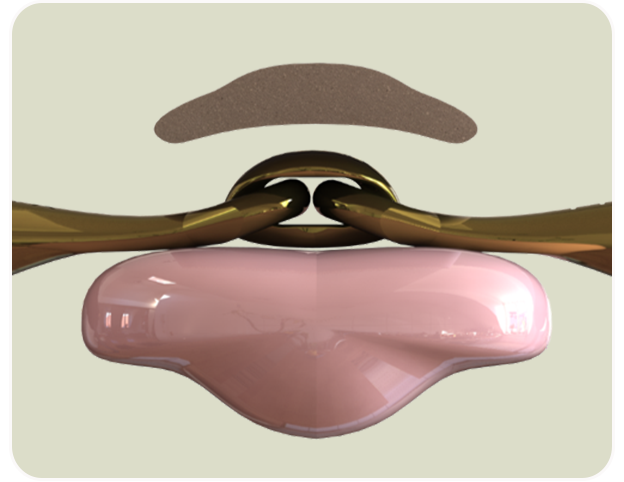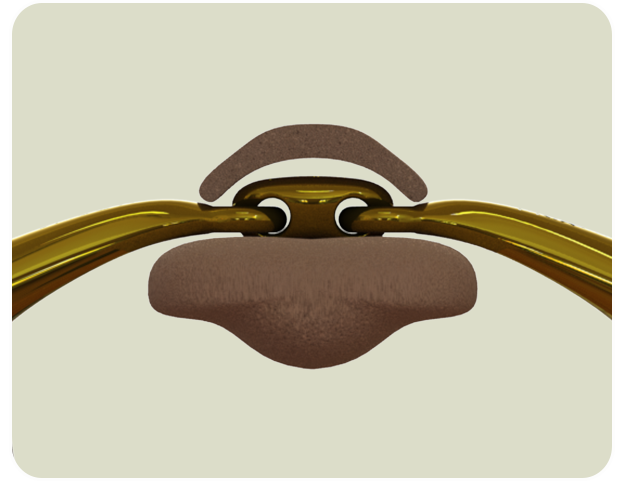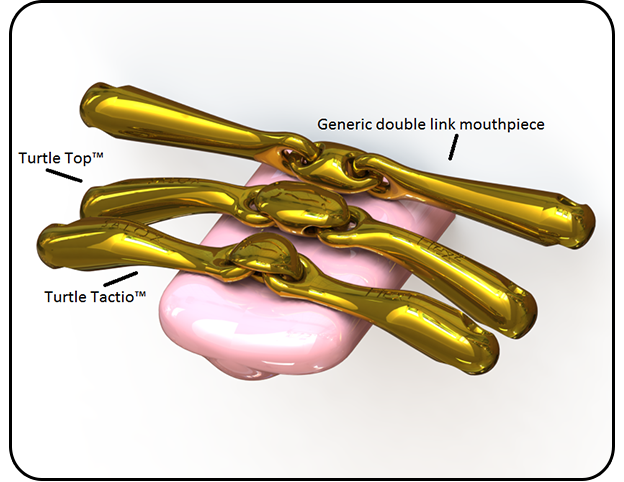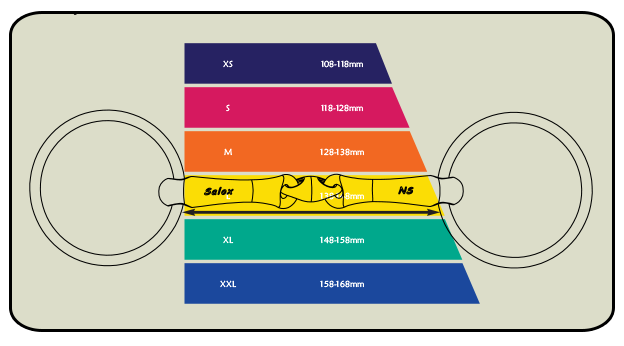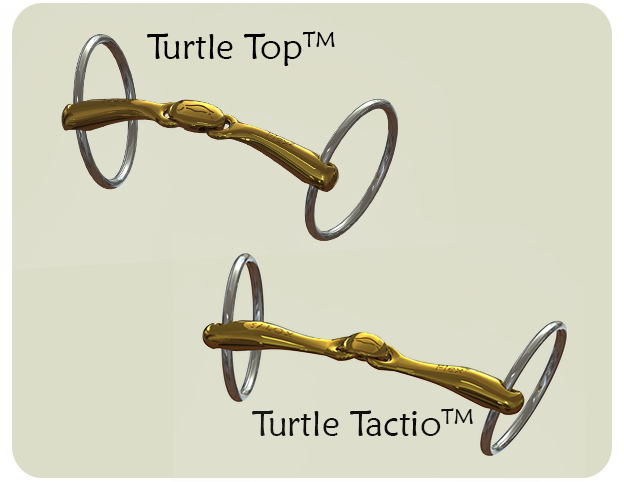
The Neue Schule Turtle Top (top left) and Neue Schule Turtle Tactio (bottom right). The Turtle name is derived from its central link shape, which itself, takes inspiration from the Box Turtle.
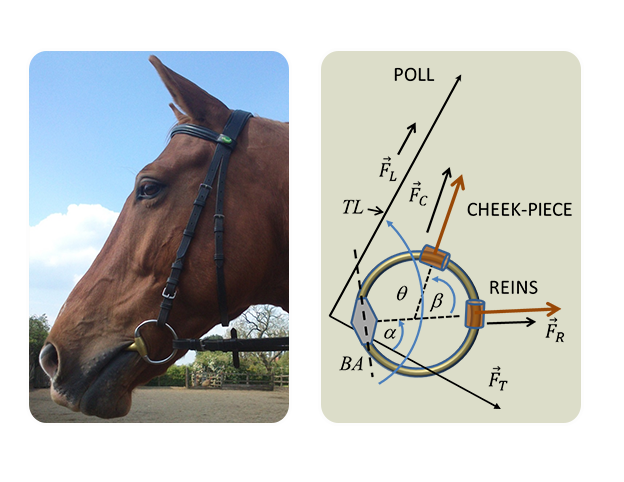

Initially, in order to achieve the optimum position and angle for comfort we captured the angles of the horses nose and tongue line (there is 10° difference), and also the angle of the cheek piece and rein.Then we measured the degree of clockwise rotation that occurs when a rider takes up a rein contact on a snaffle. This is what we call the ‘working angle’.Then we factored this in and reconfigured the bore axis accordingly. This means that we changed the angle of the hole that the bit cheeks run through at the ends of the mouthpiece cannons.
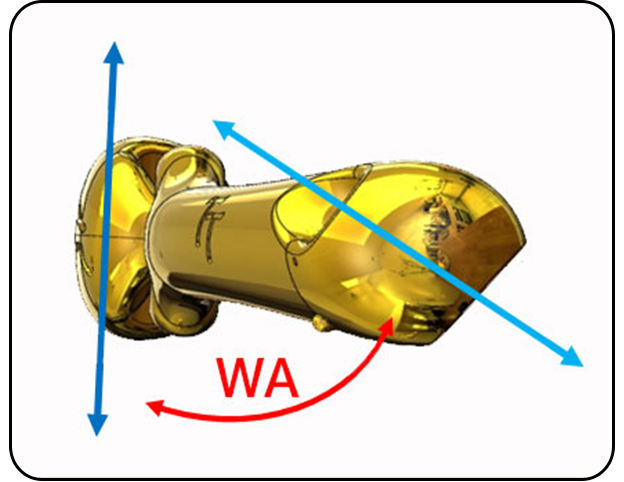
So what does this achieve?
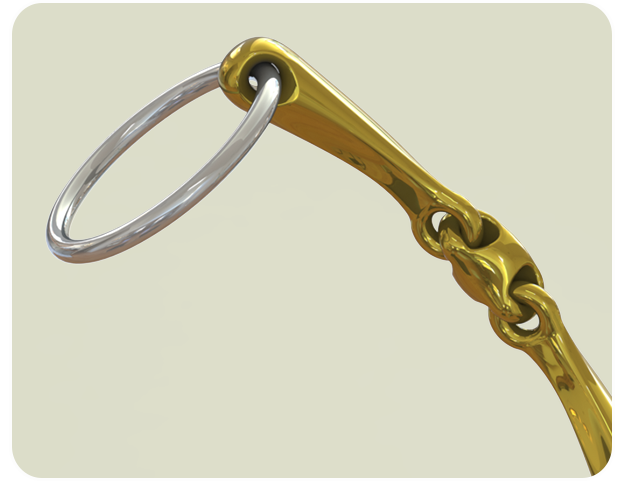
1. The concave underside of the bit lays flat on the tongue and remains this way as you ride, offering a smooth profile with more weight bearing surface and reduced pressure. However, there is very little bulk between the tongue and the upper palate meaning that it is no longer necessary to use a fat bit to achieve the large weight bearing surface.
2. The upper surface of the central link in both bits is gently curved and widened. This matches equine palate anatomy fitting neatly under the palatine arch.

3. The mouthpiece remains further back in the mouth negating the need to over-tighten the cheek-pieces. This reduces the pressure in both the corner of the lip and on the poll. This is not only more comfortable for the horse it means your subtle half halts are more readily felt.
The Turtles wrap around the tongue rather than laying along the tongue (shown left).
4. The horse is much less inclined to draw the tongue back or stick it out to the side owing to an uncomfortable mouthpiece. Old habits do however die hard and if he has ingrained tongue evasions (and these do tend to appear when a horse is stressed or excited) then there is the physical restriction of the locking cannons, which won’t lift into the upper quadrant, to help eradicate this. (The lifting of the bit’s cannons is not a rein aid that a rider would give as the hands would have to be directly above the horse’s ears in order to do so.)
Chomping and chewing is also discouraged, helping to prevent damage to the tooth enamel.
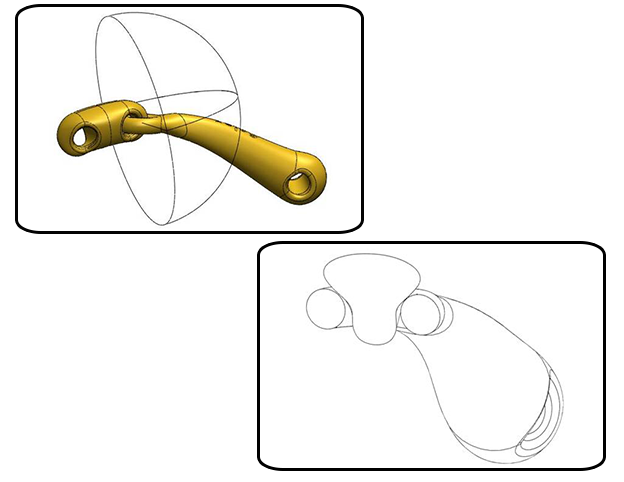
5. The resulting stability of the bit in the mouth gives clearer rein aids and the horse has fewer distractions.
So what is the difference between the Turtle Top and the Turtle Tactio?
The Turtle Top offers a very even weight-bearing surface across the whole of the mouth, whereas the Turtle Tactio utilises the centre of the tongue in order to alleviate bar pressure. This is comfortable for the horse as the centre of the tongue is depressed down onto the floor of the mouth whereas the outer edges of the tongue are not pushed down onto the angular, bony bars that are not well cushioned and therefore are much more prone to damage.
The Turtle Tactio in mouth
The Turtle Top in mouth
Fitting made easier
Turtle Top, Turtle Tactio and the Flex design concept together make identifying the optimum length of your bit easier than ever. The improvement in fit to mouth anatomy means that selecting the ideal Turtle Top or Turtle Tactio with Flex bit for your horse is readily achieved.
Simply use the Neue Schule colour coded measurement chart for guidance.
Products are available in sizes between 108 and 168 mm (that’s 4¼ inches to just over 6½ inches) – so there’s an ideal size for every horse!
Simply lay your existing bit on the chart and the size of the Turtle Top or Turtle Tactio bit you need is indicated. The colour band that best envelopes the mouthpiece of your bit from inside cheek to inside cheek indicates your ideal size.
